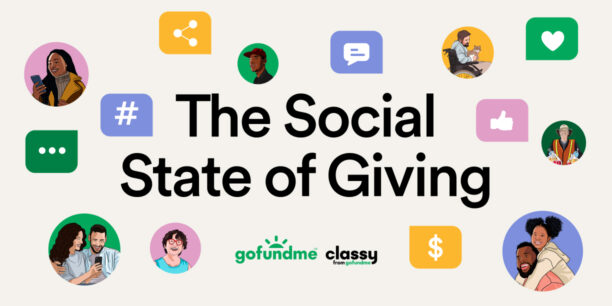6 Nonprofits Using Technology to Accomplish Their Missions

Nonprofits usually focus on how to use technology to gain exposure for their causes. Whether it’s through social media, search, or email it’s easy for nonprofit organizations to view technology as simply a means to get found. However, there are some organizations that are using the infrastructure of technology itself to advance their causes.
Below are 6 nonprofits that are tapping into technology in ways that are truly entrepreneurial.
1. Connecting Nonprofits with Technology
Because technology is always advancing, both for-profit and nonprofit organizations aim to stay on top of the latest tools, applications, and innovations. TechSoup Global seeks to create an infrastructure for nonprofits to stay informed on how to use technology to increase their social impact. Through their online platform, NGO members in Africa, the Americas, Asia Pacific, Europe, and the Middle East share ideas on how to solve social issues and become agents of global change. They are then able to connect their respective communities to the best local and global technological resources to assist with the social issues they are focused on addressing.
As a “connector across sectors,” TechSoup Global is backed by more than 90 leading tech companies – including Microsoft, Adobe, Cisco, and Intuit– and they network with other social enterprises, companies, foundations, and technological activists. Their partner site, TechSoup.org, offers free blogs, webinars, and forums to educate nonprofits on how to utilize technology. They also offer discounted and donated products and services, including high-value hardware and software from partner tech giants.
2. Ideas Worth Sharing
While new products seem to zip around the globe at breakneck speed, sometimes it still feels like we’re engaging with new ideas at a much slower pace. TED (Technology, Entertainment, Design) seeks to bridge this gap by dedicating itself to “ideas worth spreading” on science, the arts, business, technology and social issues. Its ground-breaking approach opens up the floor to the world’s most inspired and brilliant thinkers, who share their ideas in 18 minutes or less. Videos of these talks have been viewed by tens of millions of people online.
TED has discovered that no knowledge is isolated, and that everyone is part of an interconnected whole. And its online platform serves as a global community to engage, connect, and take action around game-changing ideas. They currently have two annual conferences, TED Conference and TED Global, along with an award-winning TED Talks video site, fellowship programs, local TED series, and an online translation project. With innovation at its heart, TED is determined to see the power of ideas change the world.
Check out our top 10 TED talks for nonprofit leaders
3. Spreading the News
If TED shares ideas, then NPR shares news. This multimedia provider distributes high-quality and top-priority news, information, and music programming to a network of 975 independent stations. With 26 million people tuning into NPR podcasts and newscasts every week, the organization reaches more people than the total circulation of top national newspapers!
NPR’s mission is to generate a more informed public by providing access to deeper insights into global events, ideas, and cultures through digital platforms and innovative technologies. The organization has taken traditional journalism and transformed it into a multimedia experience, ultimately reaching numbers of people that most nonprofits can only dream of.
4. Hacking for the Government
While the private sector has profited from technological advancements over the past few decades, others – namely the governmental sector – have not gained as much due to outdated software and budget cuts. But, the nonprofit sector is rushing to the government’s aid in the form of Code For America. Instead of cutting services or raising taxes, CFA believes that entire cities can use the web to operate on a higher level for their citizens. Selecting from a talented pool of web developers, entrepreneurs, and technologists, CFA matches coders with different cities; these brilliant hackers then help the cities leverage technology to positively impact their communities.
CFA coders set up apps, datasets, and events to help their respective cities operate more efficiently. From reworking criminal justice systems in New York and Louisville, to creating an app allowing Bostonians to responsibly adopt a fire hydrant, to developing a website that tracks New Orleans’ management of blighted properties – these savvy CFA techies are impacting urban renewal and civic management. Hackers? It looks like CFA has found the good kind.
5. Ending Poverty via the Web
SamaSource is digitalizing the fight against poverty. To harness the untapped potential of the poor, SamaSource gives women and youth in impoverished countries the opportunity to engage in dignified, digitally-based work. The organization recruits poor women and youth (making less than an average of $3 a day) to become workers and earn a living wage.
SamaSource provides basic computer skill training for its workers and then pairs them up with clients to work on data projects where they can cultivate lasting, critical job skills. As one of the first organizations to use impact sourcing – outsourcing by providing digital work to disadvantaged communities – SamaSource uses their web-based model “Microwork” to break down large data projects into smaller, computer-based tasks for workers to complete. In its own way, the organization is bringing the battle against poverty online.
6. Mapping the People’s Voice
At the core of social justice is giving a voice to the unheard. This is the heart of Ushahidi, a nonprofit that develops free and open-source software for information collection, visualization, and interactive mapping. Highlighted by its namesake – which is Swahili for “testimony” – the organization’s initial software allowed Kenyans to document and report incidents of violence in real-time after the grisly 2008 post-election fallout, during which 1,200 people died and hundreds of thousands of people were displaced. Citizens sent in texts, photos, and tweets from computers and mobile phones, helping the organization generate crowd-sourced maps that displayed the violence and political abuse on a global, digital scale.
Since then, this initiative has grown into the “Ushahidi Platform,” an international mapping platform for crises all over the world. 35,000 maps have been generated in 30 different languages for more than 159 countries. It has been used to organize emergency responses in real-time after crises, including the Haiti earthquake in 2010, the Japanese tsunami in 2011, and the civil war in Syria. Ushahidi is leveraging technology to create a more transparent democracy, empower the collective voice of citizens, and provide access to the reality of issues on the ground as they unfold.

Creating a Year-Round P2P Fundraising Machine



